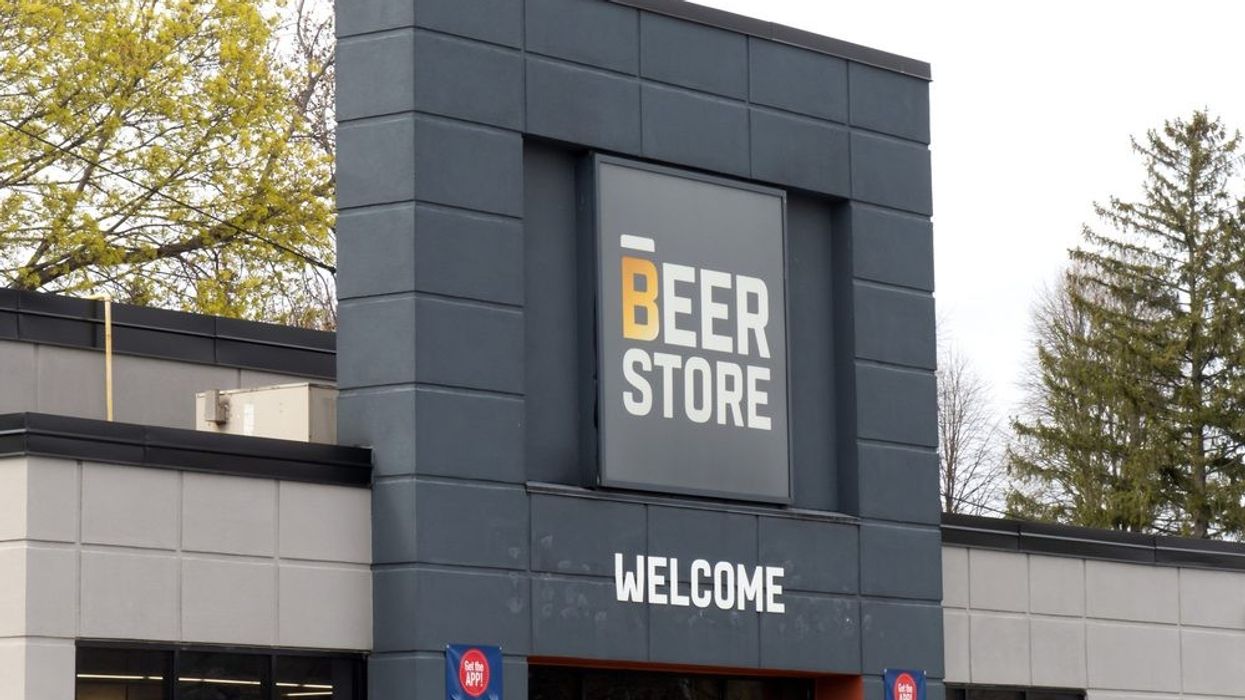The Beer Store, Canadian Tire, and four other major retailers could be a significant part of the solution to Toronto's housing affordability crisis, a new study from the University of Toronto claims.
The study, conducted by U of T's School of Cities, found that six high-profile retailers -- The Beer Store, Canadian Tire, IKEA, Sobeys, Metro, and Choice REIT (the real estate holdings of the Loblaws family) -- collectively occupy enough land in Toronto to build 68,579 new homes.
The retailers' collection of large-scale sites, often located near public transit with just a single-storey building and large surface parking areas on them, makes them ideal candidates for development.
"In other words, many of these sites are underused land, referring to sites that have more development potential than is currently being utilized," the study reads. "There is an opportunity to unlock these sites as transit-oriented or mixed-use development, with the original commercial use profitably rebuilt into mixed buildings that co-locate market housing, affordable housing, and non-profit services."
The study looked at 65 sites currently owned or occupied by the retailers and found that 64 of them were suited to have mid-rise buildings, "a type of built form that has been largely missing in the city’s ‘tall and sprawl’ development patterns over the past few decades," the study says. Using conservative criteria, just two of the sites were eligible for high-rise buildings. Forty-eight of the sites were deemed large enough to hold multiple buildings.
Three downtown Toronto locations -- the Canadian Tire at 839 Yonge Street, the Metro at 425 Bloor Street West, and the Sobeys at 1015 Broadview Avenue -- were all identified as sites where the existing store, homes, green space, amenities, and community space could all be accommodated.
All of the identified sites present an opportunity to build much-needed larger units, the study says, noting a shortage in Toronto of family-sized units in new multi-unit developments. Even more, a significant portion of the homes could be allocated towards affordable housing. Toronto's inclusionary zoning by-laws require that anywhere from 5%-22% of units be affordable, with the amount varying depending on location, when the project is built, and whether the units will be rental or for ownership. Even if just 10% of units built on the retailers' land were to be affordable, that would add nearly 7,000 affordable units to Toronto's rental inventory, the study notes.
This wouldn't be the first time that retail land in Toronto is redeveloped to accommodate larger residential projects. And according to architect and urban planner Naama Blonder, co-founder of Smart Density, it's the way of the future.
"It's not a question of 'if,' it's a question of 'when,' Blonder said. "And it should be, because anything that is one-storey high in a land use designation that allows for greater density, it's just a question of how tall, what the best built form could be, how we can achieve really good city building with other tools that we have like designing the public realm as more parks and open space."
Late last year, an application was submitted to demolish Toronto’s Centerpoint Mall and replace it with an 18-tower development with 8,325 residential units and 29,514 square metres of retail and office space. And at Yorkdale Shopping Centre, Oxford Properties Group is looking to build a 19-tower development over top of the mall’s surface parking lots that would add 7,935 units to the city.
But getting the six retailers to agree to redeveloping their properties in the way laid out in the study won't necessarily be an easy task. The report says that a pro-active approach and changes to public policy will be needed to "incentivize private landowners to accelerate the redevelopment of their underused properties with a mix of housing and the integration of facilities like libraries, daycares and recreation centres that provide community benefit."
Incentives like accelerated development approvals, density bonuses, and financial incentives are all considered. The report also recommends that developers engage in early and meaningful dialogue with communities to curb NIMBYism-fulled oppositions to increased density.
Just like with any other development project, there would be a number of planning factors to consider, Blonder notes.
"It's really like any other project, and in any other project there are good city building principles that we want to achieve," Blonder said. "That could be the treatment of the ground floor, and open space, and the built form, and what we call the street wall -- making sure the building is really contributing to the streets character. It's more about urban design than anything else, because in a city like we have that is growing rapidly, I think using the land in more of an efficient way -- and that means adding hundreds of residential units -- that obviously comes with many challenges, but it's definitely the right route."





















